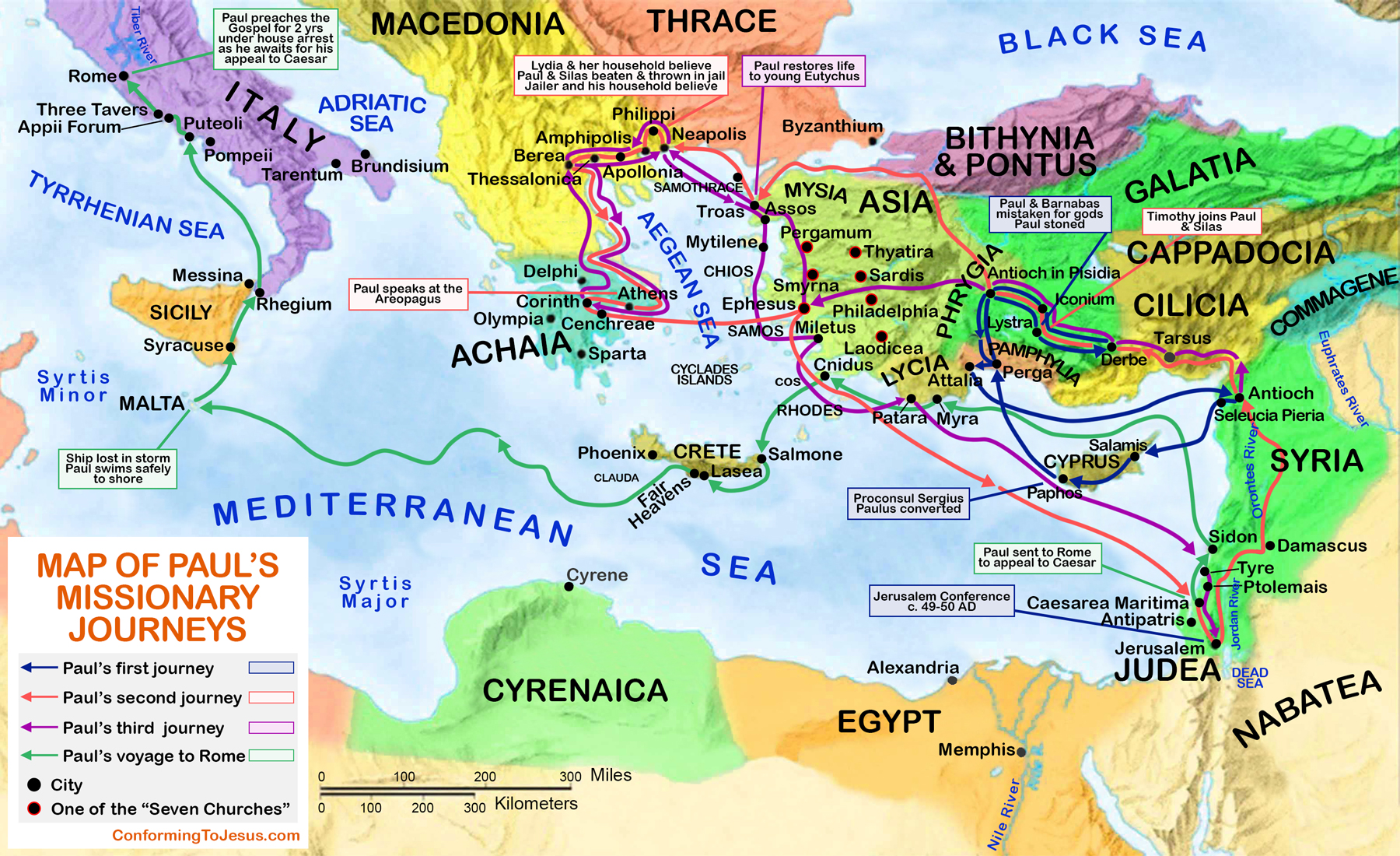There is
One body and
One Spirit, just as you were called in
One hope of your calling;
One Lord,
One faith,
One baptism;
One God and Father of all,
Who is above all, and
Through all, and
In you all.”
Ephesians 4:4-6
Ephesus, a harbor city (in modern-day Turkey), was one of the most influential churches that St. Paul established during his missionary journey. St. Paul first visited Ephesus on his return from his second missionary journey. He left Priscilla and Aquila his fellow workers in Christ to teach and train those living in Ephesus (Acts:18:19-21). On his third missionary journey, St. Paul made Ephesus his center for evangelism, as it was well connected to the other churches in Asia. He stayed in Ephesus for three years (Acts 20:31), teaching the church community there.

The city at that time was famous because of the temple of the Roman goddess Diana (Greek Artemis), it was one of the seven wonders of the ancient world. The following is a timeline of the temple of Artemis and other wonders of the world (courtesy Wikipedia).

During his time in Ephesus, St. Paul's preaching ministry was so effective that the local silversmiths, saw a steep fall in the demand for the goddess Diana idols. They forced him to leave the Ephesus and set off for Macedonia (Acts 20:1)
The letter written while St. Paul was in prison in Rome in the early 60s, refers to him as "a prisoner for Christ" (Eph 3:1) and "ambassador in chains" (Eph 6:20). He wrote this letter towards the end of his life, and his writing is more reflective and prayerful. When St. Paul started his ministry, there was a sense of urgency that Christ's coming may occur in his lifetime. However as the years went by and his possible martyrdom approached, his letter to the Ephesians was written looking at a long term perspective (Eph 1:4-5), to strengthen the members, explaining the substance, mission and life of the church.
Tychicus of Ephesus visited him while he was in prison and probably carried the letter to the Ephesians (Eph 6:21-22). Although the letter was sent to the Ephesians, in those days a general letter like this was circulated to other churches in the neighboring cities (Col 4:16).
The key thought in Ephesians is the reconciliation of all things together in Christ (Ephesians 4:15). Ephesians comprises of six chapters. In the first three chapters of Ephesians he talks about doctrines and the vertical relationship of love with God. In the last three chapters he speaks of daily living and the horizontal relationship of love with the church community. When by grace our faith (vertical relationship) in God is strong, then Christ's love transforms our fellowship with each other (horizontal relationship). In other words Ephesians (Eph 1:15) tells us what we should believe and how we should behave.
In accepting one another as brothers and sisters in Christ we live to the praise of His glory. Let us pray that through this message, we may begin to see as Jesus sees all of us as one, just as He and the Father are one in us (John 17:20-21).
Unity Leads to Faith - Disunity Leads to Doubt
Jesus Prays for Believers
Jesus prayed for believers saying,
O Father may I be in them and You in Me,
That they may become Perfectly One,
So that the world may know that
You loved them even as You loved Me.
John 17:23
Questions for Reflection
1. How do we as Christians from different denominations see ourselves as united in Christ?
2. In what ways can we live as Christ's ambassadors in the world today?
3. What poems, songs and pictures remind us of Christian unity?
4. What are some of the fears of identity and change that creep into our thoughts when we are called to live as a community?






2 comments:
Mani, Very well thought out and written. Love that you have included the history of that time.
Thank you and bless you for your thoughtful words of encouragement.
Post a Comment